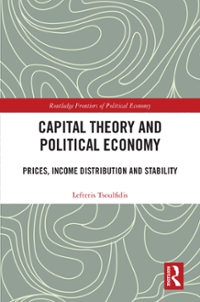Question
1. If the marginal product of labor is lower than the average product of labor, which of the following must be true? A. The marginal
1. If the marginal product of labor is lower than the average product of labor, which of the following must be true? A. The marginal product is increasing. B. The firm is operating inefficiently. C. The average product of labor will decrease. D. The total product will decrease. E. The total product will increase2. A popular bakery is able to produce 288 more muffins when they hire another baker. When they hire another after that, the bakery produces only 144 more. This is an example of. A. The law of diminishing marginal utility. B. The principle of scarcity. C. Utility maximization. D. The law of diminishing marginal returns. E. Inefficiency. 3. After a firm hires another worker, it's total production increases, but not by as much as with the addition of the previous worker. At this point, the marginal product is. A. Positive and constant. B. Negative and constant. C. Negative and decreasing. D. Positive and decreasing. E. Positive and increasing. 4. Based on the production data attached for a sloth-shaving boutique, which of the following statements is true? A. The marginal product of the second worker is 5 sloths. B. Diminishing marginal returns begin immediately with the first worker. C. The average product for the third worker is 11 sloths. D. The marginal product of the fourth worker is 4 sloths. E. Adding a sixth worker would lower the total number of sloths shaved.

Step by Step Solution
There are 3 Steps involved in it
Step: 1

Get Instant Access to Expert-Tailored Solutions
See step-by-step solutions with expert insights and AI powered tools for academic success
Step: 2

Step: 3

Ace Your Homework with AI
Get the answers you need in no time with our AI-driven, step-by-step assistance
Get Started


